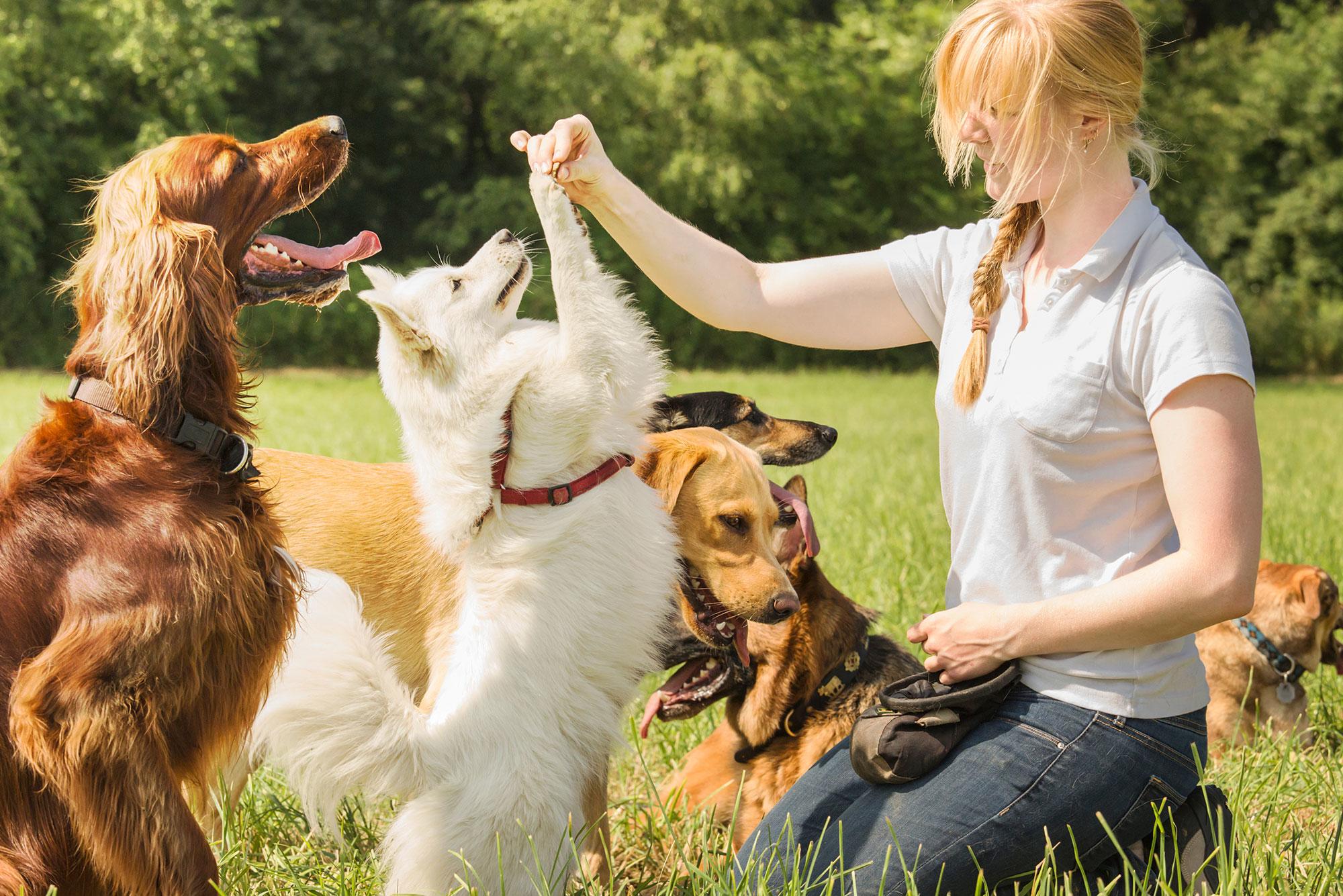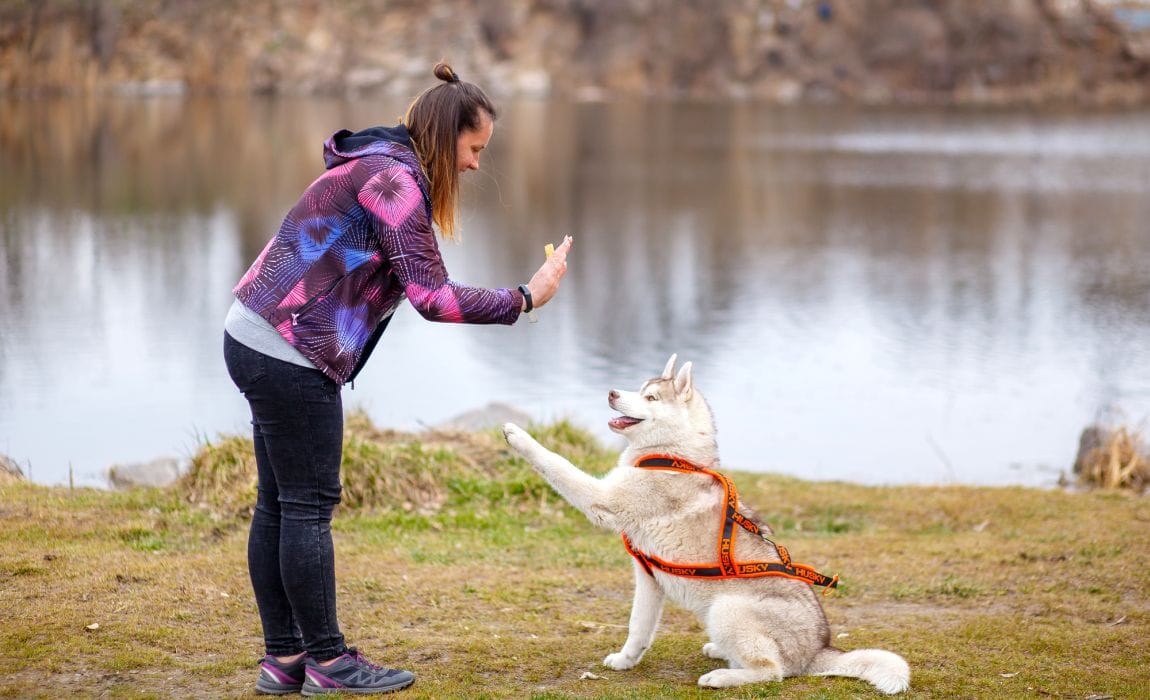Master Important Commands: Reliable Pet Dog Educating Made Easy
Reliable canine training is a fundamental aspect of accountable animal possession, and understanding necessary commands works as the foundation for an unified connection between handler and pet. Commands such as "Sit," "Keep," and "Come" not just assist in interaction yet additionally advertise a safer environment. Employing favorable support techniques can enhance the knowing experience, yet numerous deal with difficulties in achieving consistent outcomes. Understanding the nuances of canine behavior and the training process is crucial; nonetheless, the trip to a trained pet typically offers unexpected hurdles that need focus. What strategies can absolutely change these difficulties into chances for development?
Recognizing Your Pet dog's Habits
To understand the subtleties of effective pet training, it is vital to damage down and analyze your dog's habits. Dog training. Comprehending the motivations behind your pet dog's actions is vital; actions can originate from reaction, fear, exhilaration, or a need for interest. By observing your pet in numerous situations, you can determine patterns that may indicate underlying emotions or requirements
For circumstances, a canine that barks exceedingly might be sharing boredom, anxiety, or a need for social communication. Alternatively, a pet that displays harmful actions may be seeking excitement or relief from anxiety. Acknowledging these triggers allows you to customize your training technique successfully.
In addition, it is important to consider the pet dog's breed qualities, as they can affect actions significantly. Some breeds are inclined to specific qualities, such as herding or safeguarding reactions, which can influence their reactions to certain stimuli.
Lastly, consistency in your responses to your dog's habits promotes a better understanding between you and your pet. This shared understanding is fundamental for developing depend on and assisting in an effective training procedure that nurtures both behavioral modification and positive support.
Important Commands to Educate
Teaching crucial commands is a basic element of effective dog training, giving the foundation for a mannerly and receptive family pet. These commands not only boost communication in between the proprietor and the dog yet additionally make certain security in numerous environments.
One of the most important commands consist of "Sit," which urges your dog to continue to be stationary and tranquil; "Remain," which enhances the concept of continuing to be in one location until launched; and "Come," which is essential for recalling your canine from possibly unsafe circumstances. "Down" educates pet dogs to relax, advertising leisure and control, while "Leave it" aids avoid pets from grabbing hazardous or undesirable products.
" Heel" is another important command that urges your pet dog to walk very closely beside you, boosting leash manners. "No" serves as a crucial boundary-setting command, assisting to fix unwanted actions.
Training Techniques for Success
Reliable pet dog training counts look here greatly on utilizing a selection of strategies that satisfy both the pet's discovering style and the proprietor's training goals. One essential method declares reinforcement, which includes satisfying preferred actions with treats, praise, or play. This method encourages the canine to duplicate those behaviors, promoting a solid bond in between proprietor and family pet.

Another efficient technique is remote control training, where a distinctive sound, made by a clicker, marks the specific moment a dog performs a preferred activity. This precise timing helps dogs associate the habits with the reward, improving their understanding.
Uniformity is essential in all training approaches. Developing clear commands and maintaining the same hints aids the canine grasp expectations much more quickly. In addition, short, engaging training sessions stop boredom and boost retention.
Including socializing possibilities is likewise vital. Subjecting pets to various atmospheres, people, and other animals helps them establish confidence and versatility.
Lastly, perseverance plays a considerable role in successful training - Dog training. Each dog discovers at their very own speed, and understanding this can cause a more satisfying training experience for both the owner and the pet dog. Implementing these methods will certainly set the structure for effective canine training
Usual Challenges and Solutions
In spite of the ideal training techniques, canine owners commonly encounter common challenges that can impede progression. One widespread concern is inconsistency in commands and hints. When family participants utilize various commands for the very same actions, it confuses read review the dog, causing irregular actions. The remedy lies in establishing a unified method among all member of the family, guaranteeing that everybody utilizes the exact same terminology and signals.

Additionally, some pets may show stubbornness or lack motivation. This can often be resolved by incorporating positive reinforcement methods, such as deals with or appreciation, to encourage wanted behaviors. Customizing incentives to what your canine locates most motivating can substantially boost their engagement.
Finally, fear or stress and anxiety can restrain progress in training. Acknowledging indications of stress and anxiety and adjusting the training speed accordingly is vital. Using gradual exposure to feared stimulations can aid construct self-confidence over time, assisting in an extra reliable training experience.
Keeping Consistency and Patience
Uniformity and persistence are vital in pet training, as check here they create the structure for accomplishing long-term behavior changes. Dogs thrive on regular and clear expectations; therefore, preserving a consistent strategy in commands, rewards, and improvements is crucial.
Dogs, a lot like people, have differing finding out paces and may not comprehend commands quickly. Positive support plays a crucial function here, fulfilling preferred habits and assisting to promote a trusting connection in between the canine and instructor.
Conclusion
Grasping essential commands is essential to reliable pet training, fostering enhanced interaction and reinforcing positive habits. The application of favorable support strategies, coupled with consistency and persistence, dramatically boosts the training experience for both the dog and handler. Attending to usual challenges with useful options better supports the training process. Eventually, a well-trained pet dog not just exhibits etiquette yet additionally develops self-confidence, contributing to a harmonious relationship between the canine and its owner.